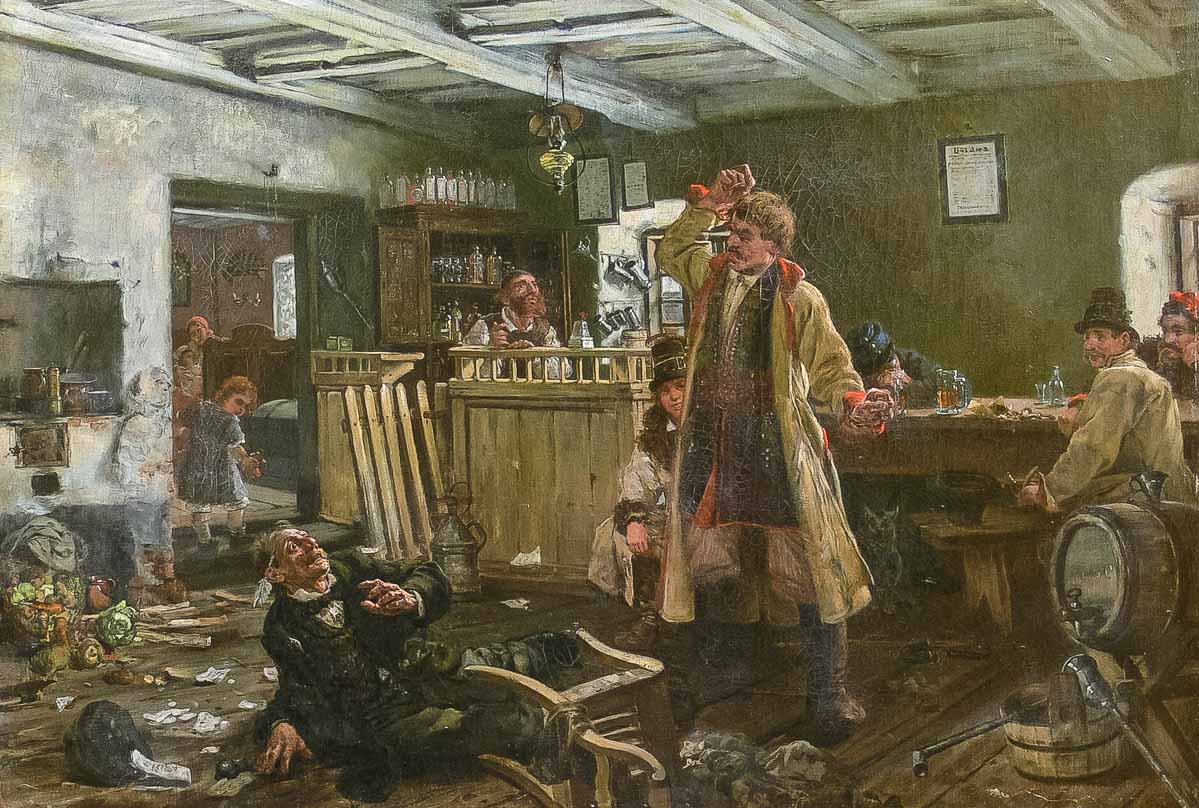Research Project Objectives
It begins innocently, a glass shared with a friend, another to keep warm on a cold day, through joyful companionship, to loneliness, poverty and, finally, death. This is how Nathaniel Currier depicted the nineteenth-century drunkard's journey from the first glass to the grave. But is the story really that simple? What did it mean to be sober in the 19th century? How were drunkenness and alcoholism defined? What was considered alcohol? The answers to these questions seem simple and obvious to us today, but research into the cultural history of alcohol shows that notions of sobriety, drunkenness or alcohol are socially and culturally constructed and variable.
We assume, then, that both the state of sobriety and drunkenness are historically variable and perceived in different ways, not only over the research period, but also in the context of what substance is classified as an intoxicant, who is considered to be sober/drunk, and who makes such judgments. Assuming the changeability of these phenomena as well as the evolution of the definition of alcohol (food, medicine, intoxicant), we suppose that the intoxicating beverage was defined not so much by the amount of alcohol it contained, but by the way, quantity and context in which it was consumed, as well as by the intellectual, emotional, and physical state of the person who drank it.
Using nineteenth-century printed (press, specialist literature, fiction) and manuscript sources (court records, correspondence, diaries, etc.), we aim to explore how the boundaries between excessive consumption and sobriety were socially created, contested and shifted under the influence of the activities of political, religious, cultural and scientific actors represented in discourses on drunkenness and sobriety. Our aim is to understand what was problematic about transgressing the norms of drinking, what actions were taken to address this problem, and what the effects of these actions were. We also want to analyse how individual responsibility for intoxication was defined and how this changed over time.
Methodology
Using an anthropological approach to alcohol and its effects, we take a non-judgmental approach, treating it neutrally, rather than implying a clear social problem. We try to eliminate cultural prejudices and recognize alcohol and its consumption not as a social problem, but as an element of culture. Such a perspective enables us, in the words of Pekka Sulkunen to “look through the window not only from society to alcohol but also from alcohol to society”.
The collected source material will also be analysed in the context of the phenomenon of moral panic. This category has already been used to describe contemporary alcohol problems. On the basis of our preliminary research, we decided that this category would be useful to describe both the attitude towards alcohol itself, and the entities considered to be crossing the boundary between sobriety and drunkenness.
The research will draw on the Discourse-Historical Approach which contextualizes discourse historically using four level of context as heuristics: language or text internal context; intertextual and interdiscursive relationships; social/sociological variables and institutional frames of a specific context of situation; an account of the wider cultural, socio-political and historical contexts.
The constructed database developed during the project, containing extensive sources such as newspaper articles, specialized publications, ephemera, and others, provides us with a unique opportunity to illustrate the studied phenomena through microhistory case studies.
Finally, we will be in a position to juxtapose the outcomes of critical discourse analysis with the analyses of case studies. This multifaceted approach serves as a response to the necessity for more robust methodologies in cultural history .
Since the project also involves tracing the evolution of concepts such as alcohol, drunkenness, and sobriety, the collected material will also include a lexical and semantic analysis in the historical context.
Research Team
The project team will include specialists in legal history, medicine, ethnic minorities, historical linguistics, sociology and cultural anthropology who will work closely with researchers from the UK, France and Ireland. In addition to publications or an open source database, the project will result in the creation of an interdisciplinary centre for alcohol research.
Sources: (1) N. Currier. (ca. 1846) The drunkards progress. From the first glass to the grave / lith. & pub. by N. Currier. , ca. 1846. New York: Lith. & pub. by N. Currier. [Photograph] Retrieved from the Library of Congress, https://www.loc.gov/item/91796265/.
(2) Seweryn Bieszczad - W karczmie 1885 Wikimedia Commons



